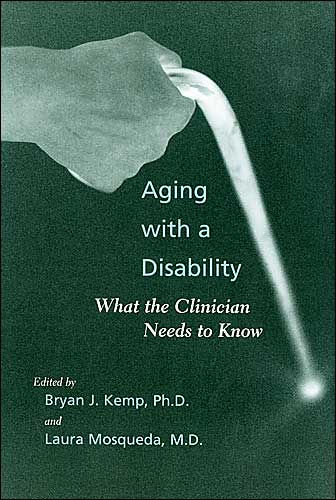Aging with a Disability provides clinicians with a complete guide to the care and treatment of persons aging with a disability. Divided into five parts, this book first addresses the perspective of the person with a disability and his or her family. Chapters in the second section address the physiological and functional changes people will face as they grow older, and how these changes may affect quality of life and caregiver requirements. In the third part, contributors discuss treatment considerations such as maintaining employment and managing pain and fatigue. The book's fourth section focuses on specific conditions: spinal cord injury, polio, cerebral palsy, and developmental disabilities such as mental retardation. In the concluding section, the authors present research needs and discuss policy issues for future consideration. Paying special attention to the feelings, attitudes, and needs of people with disabilities—three chapters are written by authors who have a disability—Aging with a Disability gives students and clinicians a reliable and compassionate handbook for the treatment of this growing population.
Aging with a Disability provides clinicians with a complete guide to the care and treatment of persons aging with a disability. Divided into five parts, this book first addresses the perspective of the person with a disability and his or her family. Chapters in the second section address the physiological and functional changes people will face as they grow older, and how these changes may affect quality of life and caregiver requirements. In the third part, contributors discuss treatment considerations such as maintaining employment and managing pain and fatigue. The book's fourth section focuses on specific conditions: spinal cord injury, polio, cerebral palsy, and developmental disabilities such as mental retardation. In the concluding section, the authors present research needs and discuss policy issues for future consideration. Paying special attention to the feelings, attitudes, and needs of people with disabilities—three chapters are written by authors who have a disability—Aging with a Disability gives students and clinicians a reliable and compassionate handbook for the treatment of this growing population.

Aging with a Disability: What the Clinician Needs to Know
328
Aging with a Disability: What the Clinician Needs to Know
328Paperback(New Edition)

Product Details
| ISBN-13: | 9780801878176 |
|---|---|
| Publisher: | Johns Hopkins University Press |
| Publication date: | 06/15/2004 |
| Edition description: | New Edition |
| Pages: | 328 |
| Product dimensions: | 6.00(w) x 9.00(h) x 0.85(d) |
| Age Range: | 18 Years |
